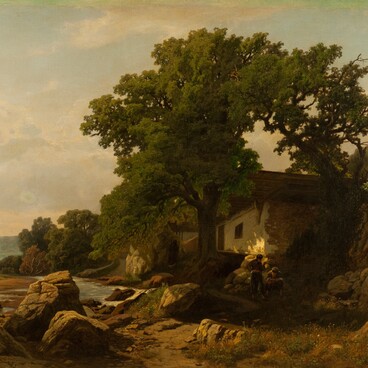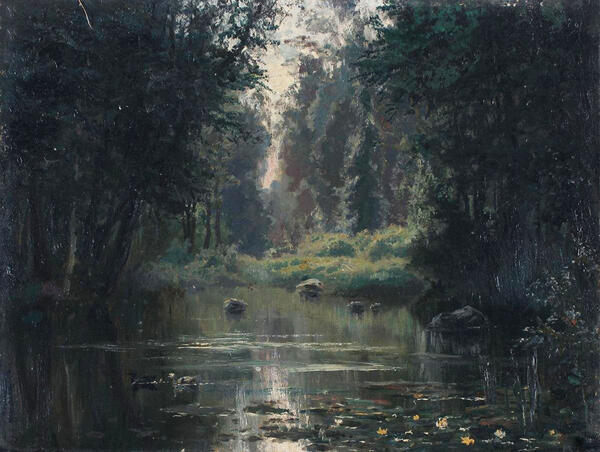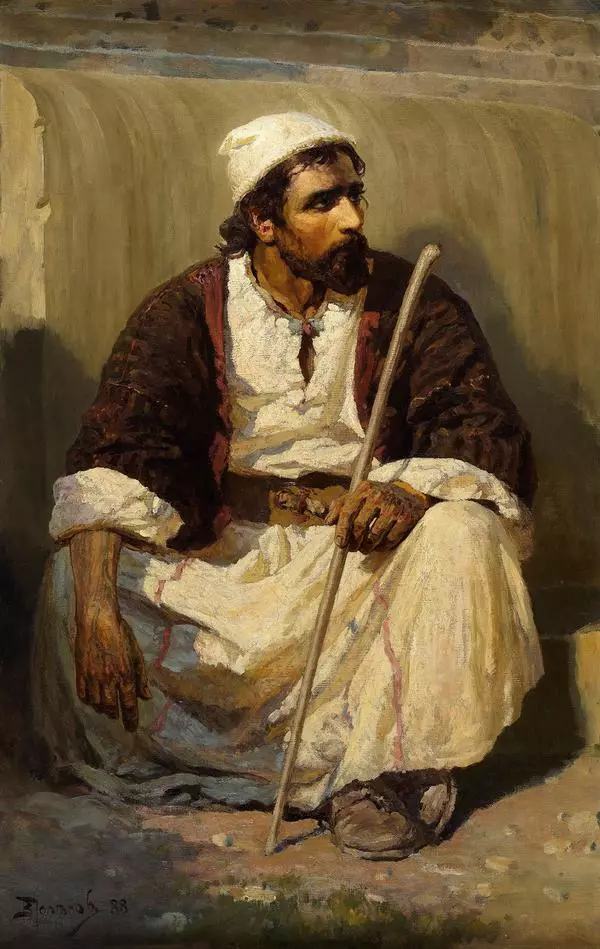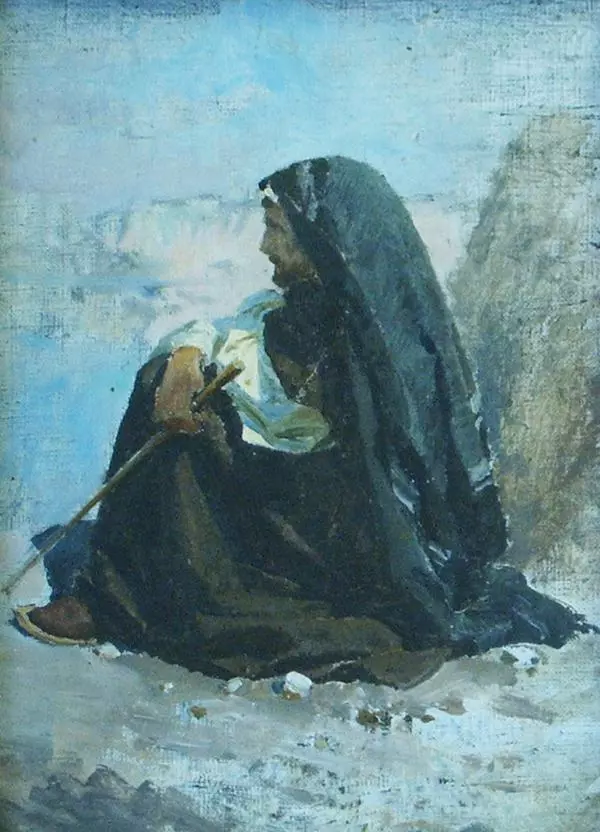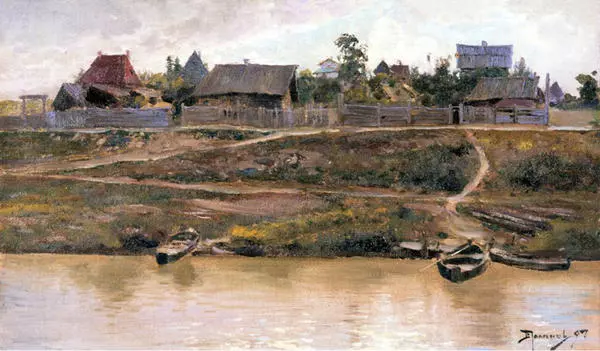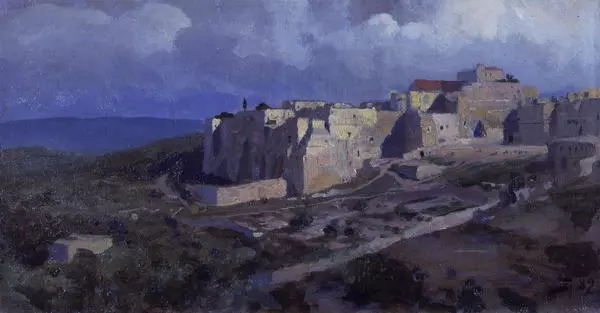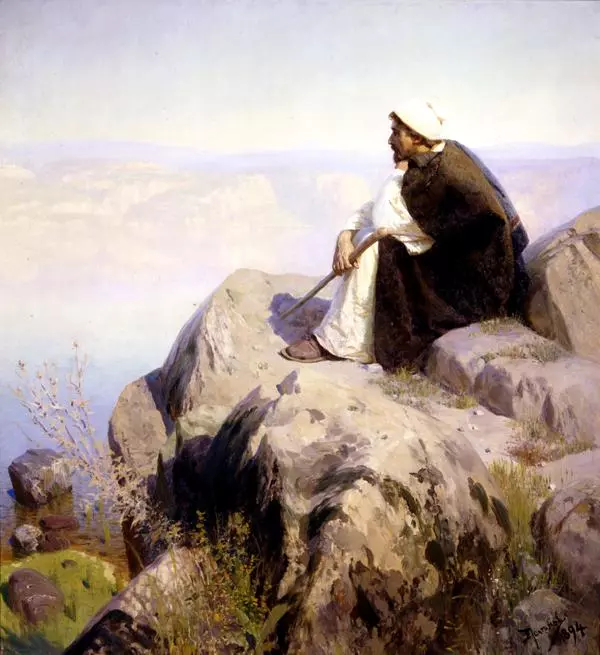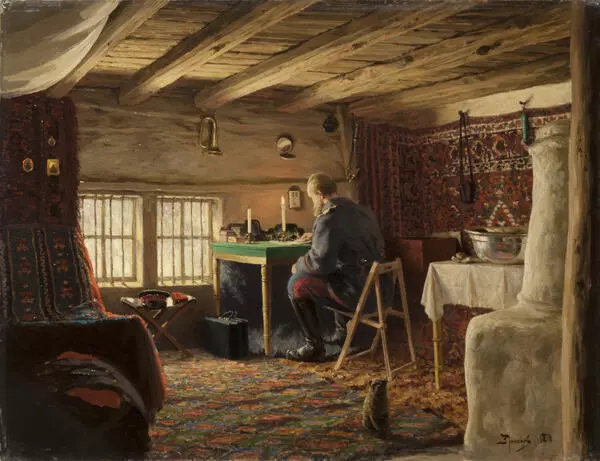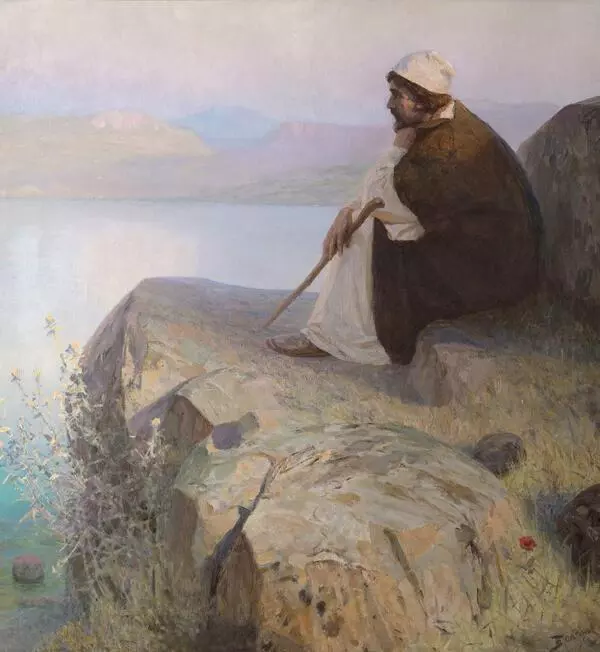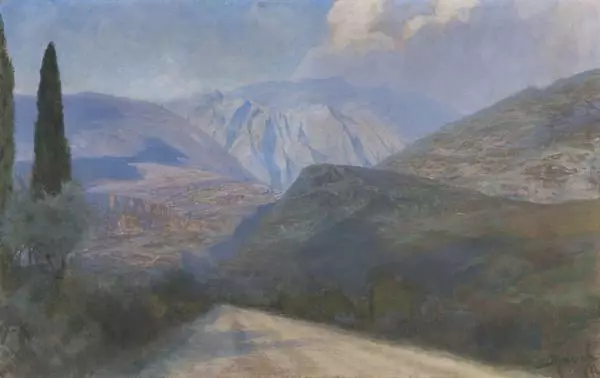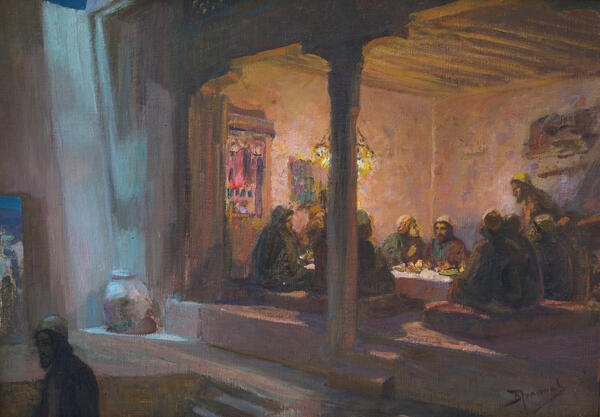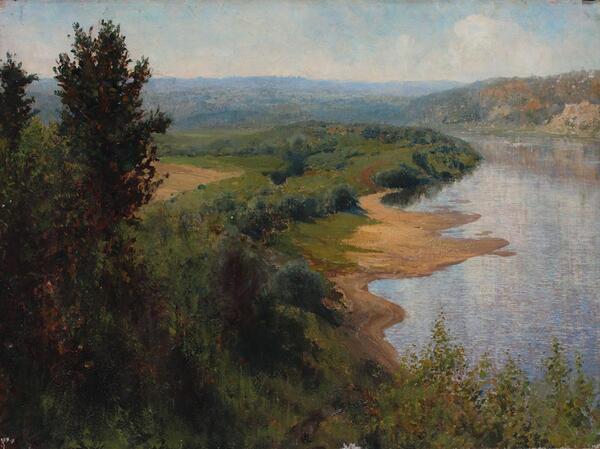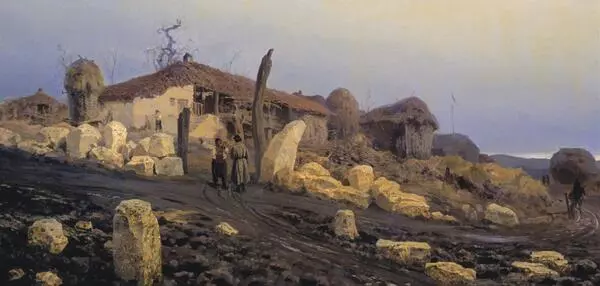“Christ and the Sinner” describes a classical passage from the New Testament while playing on the contrast between the calm, composed figure of Jesus Christ and the furious mob armed with sticks and stones. In the passage, Jesus was teaching on the steps of the temple when the Pharisees brought a woman accused of adultery before him. Since the teaching of Jesus often contradicted with Mosaic law, the Pharisees confronted Jesus, hoping to provoke him. They asked Jesus whether the punishment for her should be stoning, as prescribed by one of the commandments, since she had been caught in the act. But Jesus said: “Let anyone among you who is without sin be the first to throw a stone at her.” So the mob dispersed and the woman was set free.
A realist painter, Polenov managed to masterfully capture a typical landscape of Galilee, as well as proportions and architecture of the temple. However, despite the silver lining, the painting was censored, because Christ was depicted too human, there was nothing God-like about his figure in the painting. It was not until Emperor Alexander III intervened personally that the painting could finally be shown to general public.
Polenov did a painstaking job to capture the unique style of local clothing and the peculiarity of the land. His attention to details was one of his stronger traits. Polenov did a great number of sketches and studies for the painting.
One of those studies, “Luxor”, is now on display in Massandra palace. Until 1941, it was held in the storage rooms of Vorontsov palace, from which it was transferred to Simferopol Art Gallery and was returned back in 1956. It has become part of the permanent exhibition of Massandra palace since the reopening of the museum in 1992.
Luxor is a small town on the east bank of the Nile. It stands on the ruins of the Ancient Egyptian capital of Thebes. The temple of Luxor was among the most important sanctuaries of Ancient Egypt. The walls of the temple tell the tale of Pharaoh Ramesses II’s victory over the Hittites. The entrance to the temple was flanked by two colossal statues of Ramesses II and two obelisks, one of which was brought to Paris in 1861.
The study shows an Egyptian landscape. In the foreground there is a bright strip of the flat sandy bank of the Nile, behind which sailboats on blue water can be seen. On the high bank there are stone ruins, and further in the distance is the barely visible contour of a pyramid. Pale blue sky dominates the picture.




